I tried this simple speed camera and hazard tracker – and it’s the affordable, screen-less copilot I’ve been looking for
Tired of in-car distractions? Ooono could have the answer

- The Co-Driver NO2 tracks speed cameras, road hazards and more
- Community-driven, real-time feedback keeps data up-to-date
- Device is small and easy to swap between vehicles
There is a groundswell of discontent growing among new vehicle owners, as manufacturers have seen fit to add layers and layers of nannying Advanced Driver Assistance Systems (ADAS) to their products in recent years.
It’s partly a marketing exercise to be seen to offer the most tech, but also a necessary evil in order to appease the various safety organizations (not least Euro NCAP) and garner its coveted five star safety rating.
But not every driver necessarily wants this suite of alerts, while many still happily own and drive vehicles that were produced before they became a standard feature. Whichever it is, German automotive tech company Ooono believes it has a neat halfway house.
The Co-Driver NO2 is a discreet safety device that can be mounted anywhere on a vehicle’s dashboard, so long it is within reach of the driver, and offers visual and audible alerts on the location of fixed speed cameras, upcoming road hazards and changes in speed limits.

It costs £69.99 at Amazon (around $92/AU$140) and is available in much of Europe, although it isn't on sale yet in the US.
But the device is hugely popular in Germany and other European countries, where it has sold in excess of 4 million units, while sales have increased by 150% in the UK in recent months.
Why is that important? Well, the community is relied upon to deliver real-time feedback, such as the location of mobile speed cameras, broken down vehicles, accidents and other such incidents.
Sign up for breaking news, reviews, opinion, top tech deals, and more.
Ooono says it is like having “an extra pair of eyes on the road” and its latest unit has received a number of upgrades that make it more useable than ever.
Easy set-up
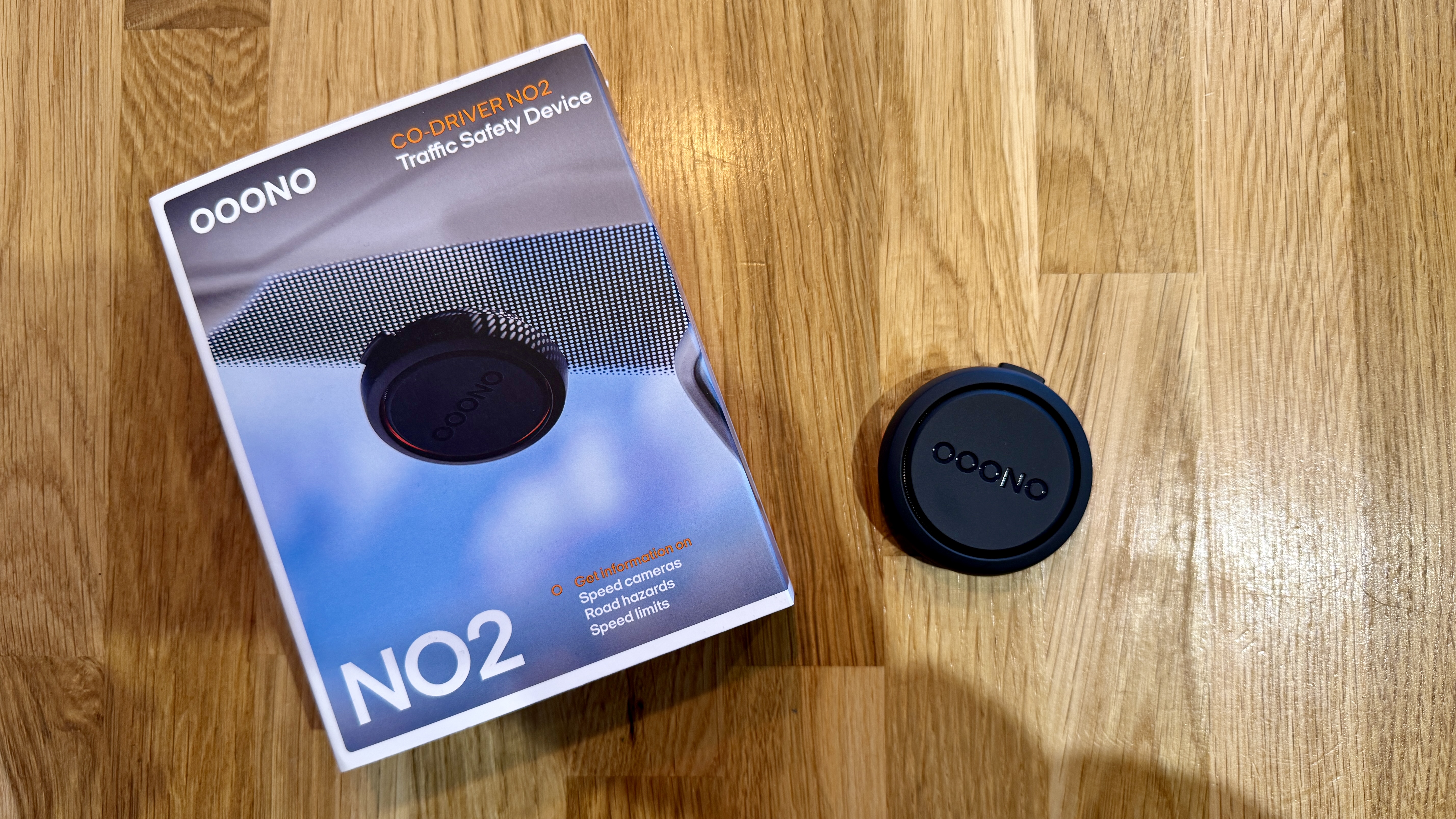
The little puck-like device uses a rechargeable battery that lasts around a month on a full charge, but seeing as it supports standard USB-C charging (with an adaptor for older vehicles with USB), it’s really simple to charge in the car from a dedicated outlet or 12V socket adaptor.
On the rear of the Co-Driver NO2 there are two tiny magnets with 3M tape on one side. Once you’ve found the right location, which has to be within easy reach of the driver, it’s simply a case of removing the 3M protective covers and sticking it in place.
Once the magnets are mounted, you can then remove the device and take it away - buy another set of magnets and it can be transferred between vehicles very easily.
Ooono has its own dedicated smartphone app, which helps users get accustomed to the various button pressing patterns that are required to report issues on the road or dismiss notifications. It's also possible to navigate using Ooono's own software.
The unit starts automatically when you get in the car and it detects a smartphone is within range. It requires a smartphone with the Ooono app running in the background in order to hijack the data feed and piggyback its GPS to make it work.
But you can leave that phone in the pocket, away from temptations, and let Co-Driver notify of nearby speed cameras, changes to speed limits and upcoming hazards.
Even easier to use
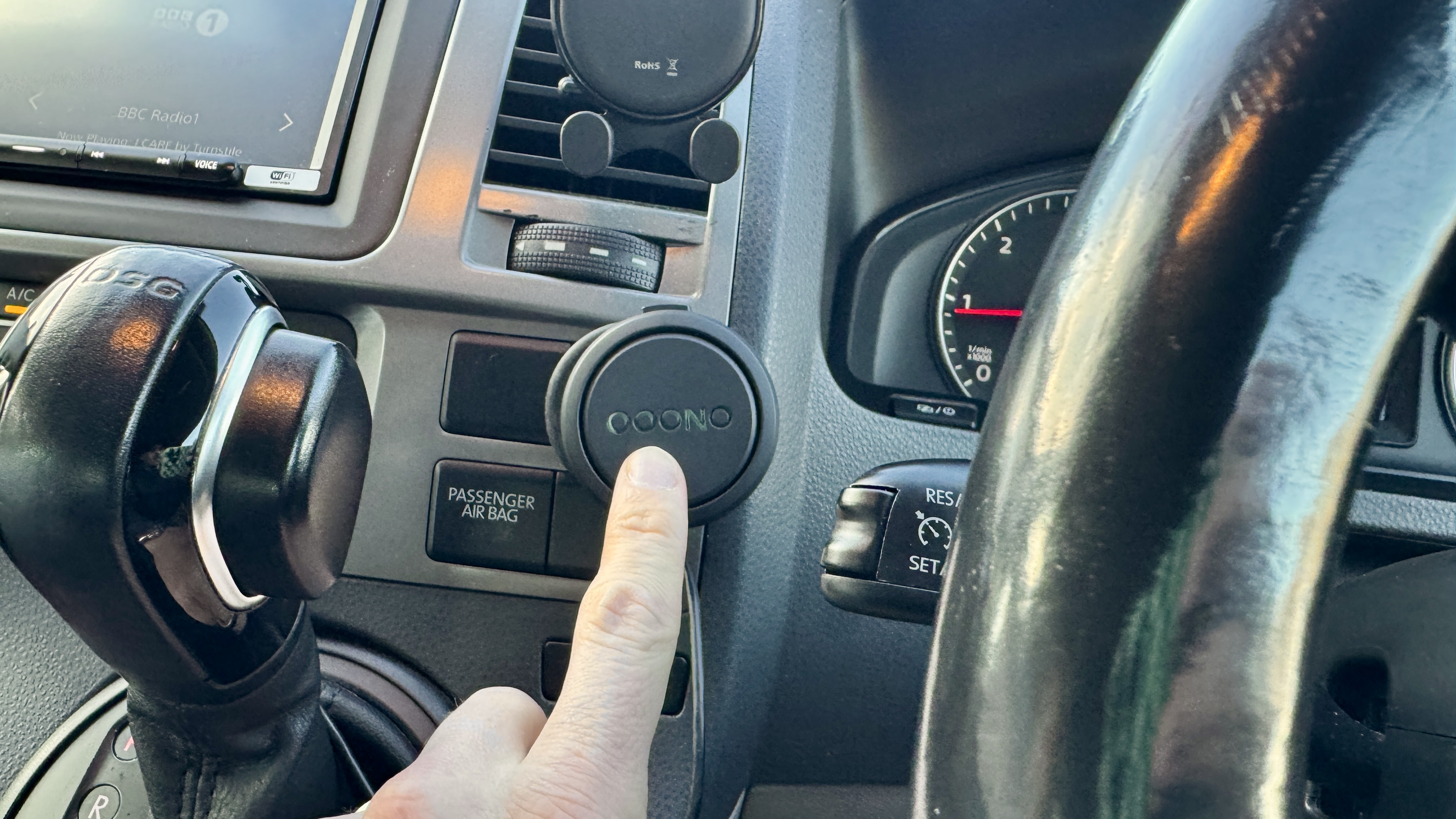
The second generation of Ooono’s little gadget now plays nicely with both Apple CarPlay and Android Auto, so the unit will play audible notifications through the vehicle’s sound system, as well as from the device itself.
It is also possible to project Ooono's navigational software through any vehicle head units that run either Apple CarPlay or Android Auto.
I set mine up on the dashboard, just to the left of the steering wheel, and waited for the first notification to arrive. Sure enough, it flagged a static speed camera nearby my house with plenty of notice.
It made me jump at first, as the audible alert was played through the vehicle’s sound system at a fair volume. But hey, it did the job and I checked my speed before passing the big yellow law enforcer.
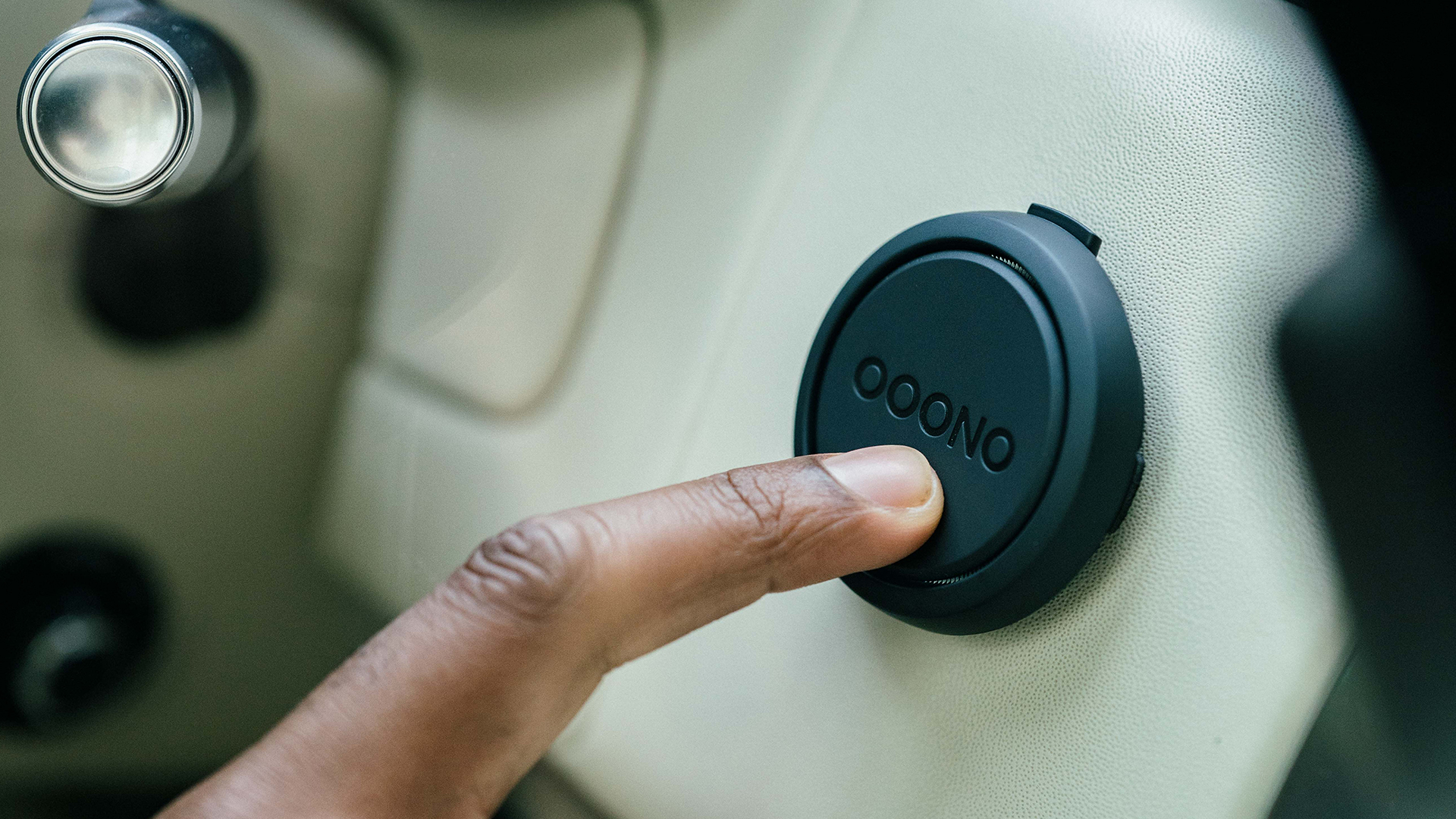
Dive into the settings and it’s possible to have Ooono warn when you’re traveling too fast for the section of road in question. It’s still in Beta phase but worked perfectly well for me on public roads, even when not using the firm's navigation software, flashing a clear blue LED ring and sounding a warning when nudging over the speed limit.
Personally, I found this a step too far and it got a bit annoying after a while. It’s the sort of system I immediately turn off in modern cars, but if you need a constant reminder that you are traveling too fast, it’s a worthy addition.
Building a community
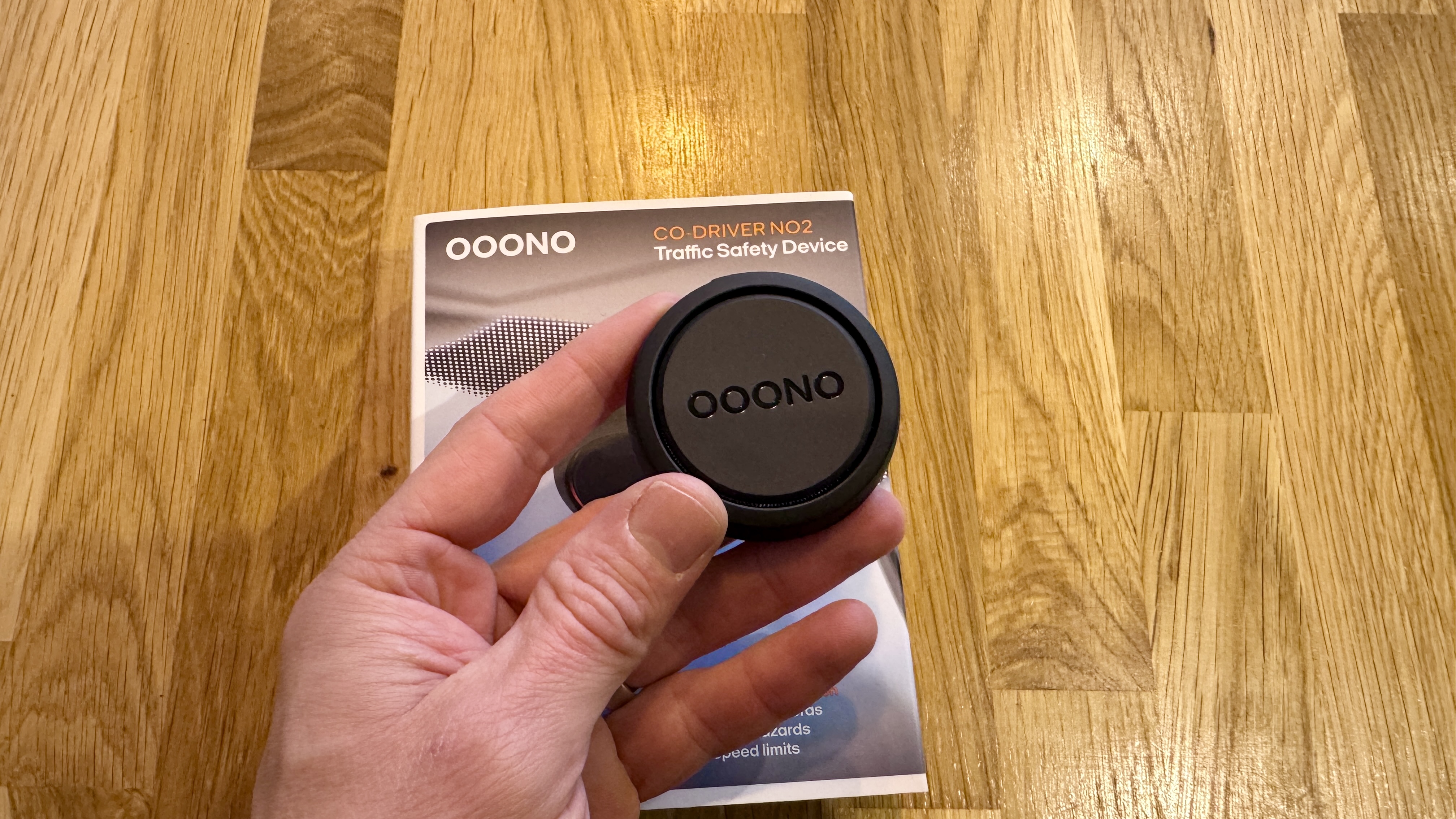
Oooono also relies on its community to report mobile speed cameras or changes in speed limits, which can be done with a simple single tap on the device. Road hazards are reported with a double tap and there’s a dedicated button at the top of the device to dismiss phantom warnings.
It really is that simple and there aren’t any distracting screens constantly flashing information into the driver’s line of sight.
However, despite the popularity of the device in Germany and other countries, the community is still growing in the UK. This manifested in a patchy reporting of road hazards and broken down vehicles, with the likes of Google Maps and Waze doing a better job there.
But Ooono’s database contains over 150,000 verified speed cameras, and the German company must be doing something right, because its supplies its safety camera database to a number of automotive manufacturers and Tier 1 suppliers.
TomTom has also just launched an eerily similar product in its Tom by TomTom device. In the UK, it is priced exactly the same as Ooono.
Is it any good?
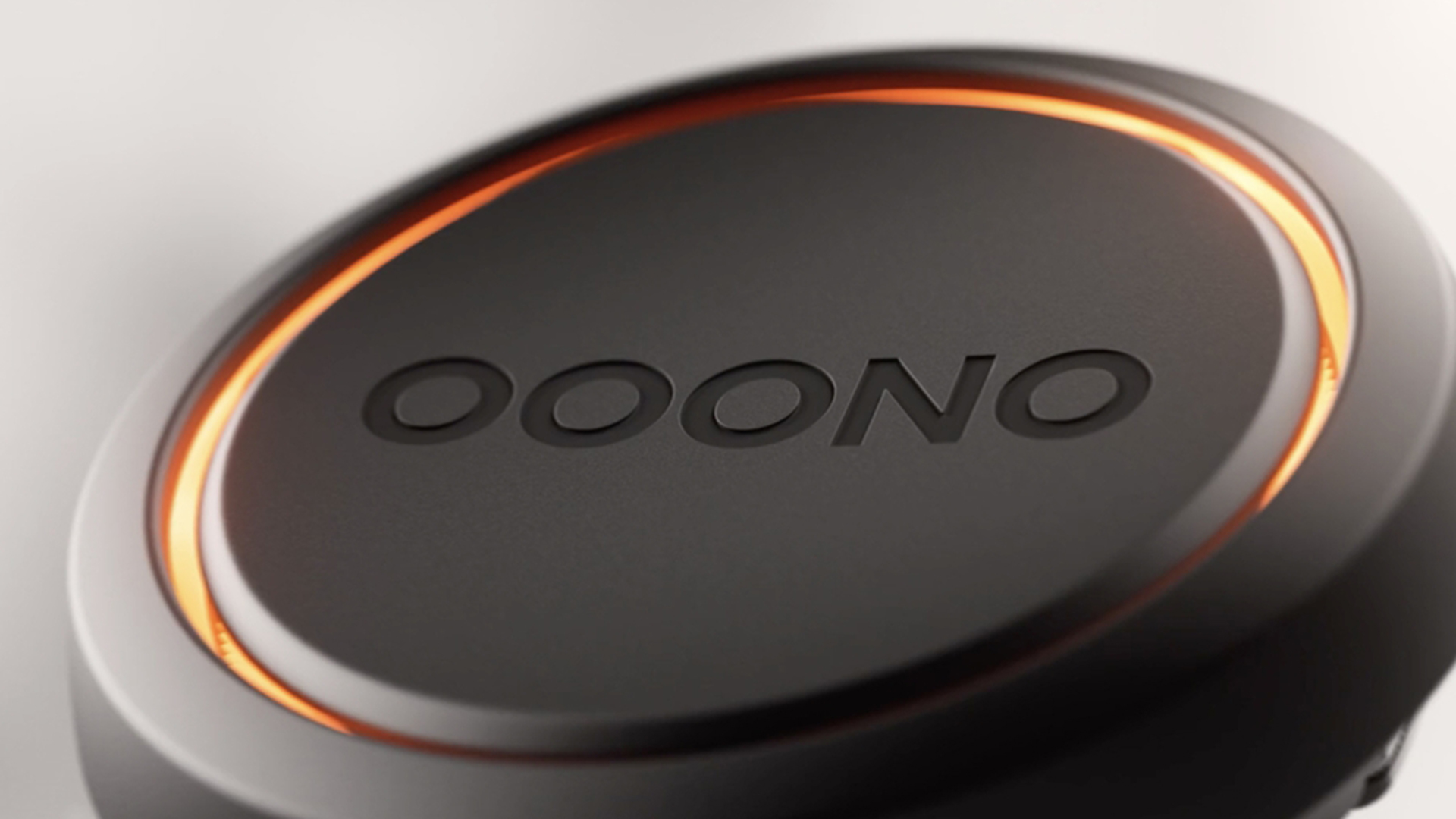
In short, yes it is. Ooono is one of the simplest automotive devices that I’ve tested in a long time and it does exactly what is promised on the box. For persistent speeders, I imagine this would be the perfect solution to avoid being constantly caught unaware by fixed camera systems.
What’s more, the speed limit functionality might even serve to change driving behavior entirely, as listening to the warning tones, which are actually quite pleasant compared to many rivals, gets annoying after a while.
The key issue is the live hazard reporting, which relies on community data to perform properly and it’s not quite where it needs to be… in the UK at least.
On top of this, Waze, Google Maps and Apple Maps also offer similar safety camera warnings, alerts for speed limit changes and reliable reports of upcoming hazards or broken down vehicles… depending on what region you live in.
The warnings might not be as obvious as Ooono’s, but anyone navigating using the aforementioned software in the UK and much of Europe will be aware of them.

However, Ooono really comes into its own when you consider the device provides speed camera warnings in all markets and doesn’t ever require eyes to be taken off the road.
There aren’t any screens to tempt or distract when trying to concentrate on what’s important, and even reporting incidents requires a simple, muscle memory click.
It’s a great antithesis to modern vehicles that are packed to the gunwales with touchscreens and fiddly haptic buttons, but it also works well in older vehicles that perhaps lack this sort of safety tech.
Ooono’s navigation services, which it offers through its smartphone app, are perfectly good enough, too.
Regular Apple Maps, Waze and Google Maps users will likely find it difficult to justify purchasing a separate device, unless they really need the speed camera reminders.
Follow TechRadar on Google News and add us as a preferred source to get our expert news, reviews, and opinion in your feeds. Make sure to click the Follow button!
And of course you can also follow TechRadar on TikTok for news, reviews, unboxings in video form, and get regular updates from us on WhatsApp too.

Leon has been navigating a world where automotive and tech collide for almost 20 years, reporting on everything from in-car entertainment to robotised manufacturing plants. Currently, EVs are the focus of his attentions, but give it a few years and it will be electric vertical take-off and landing craft. Outside of work hours, he can be found tinkering with distinctly analogue motorcycles, because electric motors are no replacement for an old Honda inline four.
You must confirm your public display name before commenting
Please logout and then login again, you will then be prompted to enter your display name.